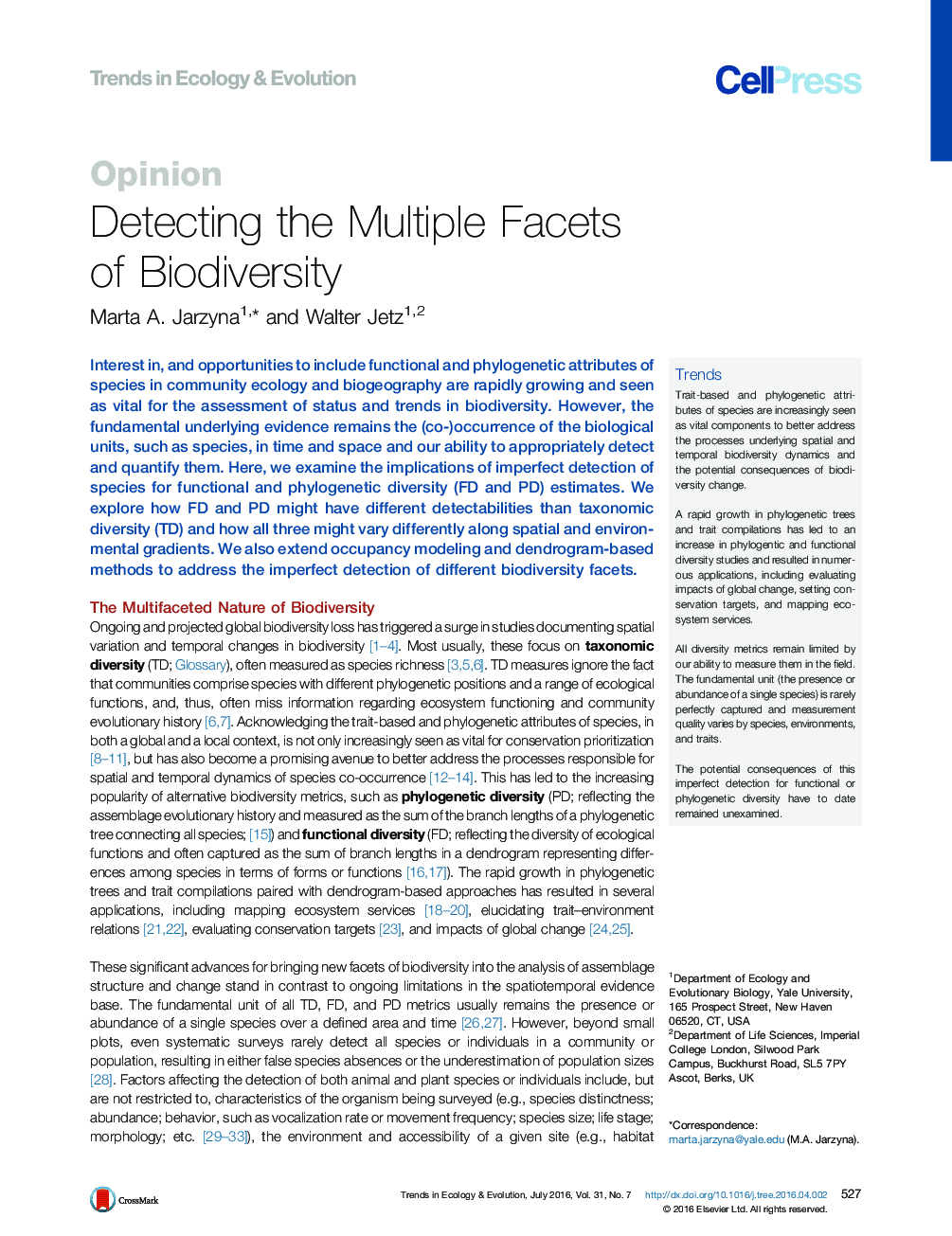| Article ID | Journal | Published Year | Pages | File Type |
|---|---|---|---|---|
| 142293 | Trends in Ecology & Evolution | 2016 | 12 Pages |
Interest in, and opportunities to include functional and phylogenetic attributes of species in community ecology and biogeography are rapidly growing and seen as vital for the assessment of status and trends in biodiversity. However, the fundamental underlying evidence remains the (co-)occurrence of the biological units, such as species, in time and space and our ability to appropriately detect and quantify them. Here, we examine the implications of imperfect detection of species for functional and phylogenetic diversity (FD and PD) estimates. We explore how FD and PD might have different detectabilities than taxonomic diversity (TD) and how all three might vary differently along spatial and environmental gradients. We also extend occupancy modeling and dendrogram-based methods to address the imperfect detection of different biodiversity facets.
TrendsTrait-based and phylogenetic attributes of species are increasingly seen as vital components to better address the processes underlying spatial and temporal biodiversity dynamics and the potential consequences of biodiversity change.A rapid growth in phylogenetic trees and trait compilations has led to an increase in phylogentic and functional diversity studies and resulted in numerous applications, including evaluating impacts of global change, setting conservation targets, and mapping ecosystem services.All diversity metrics remain limited by our ability to measure them in the field. The fundamental unit (the presence or abundance of a single species) is rarely perfectly captured and measurement quality varies by species, environments, and traits.The potential consequences of this imperfect detection for functional or phylogenetic diversity have to date remained unexamined.
